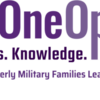Extension educators are in a position to help consumers build financial health. This post describes what financial health is, how to assess it, and twelve steps to achieve it.
What Is Financial Health?
Financial health is the current state of someone’s finances. It includes both daily financial functioning (e.g., paying bills) and long-term resilience and opportunity. Like physical health, financial health can change over time and needs to be assessed regularly. According to the Financial Health Network, there are four components of financial health, each with two key indicators:
- Spend- Spend less than income and pay bills on time and in full
- Save- Have sufficient living expenses in liquid savings and sufficient long-term savings or assets
- Borrow- Have a sustainable debt load and a prime credit score
- Plan- Have appropriate insurance and plan ahead for expenses
How to Assess Financial Health
There are dozens of available instruments that assess financial health and similar concepts including financial well-being, financial fitness, financial wellness, and financial capability. All five terms have similarities (e.g., a focus on goal setting and planning) and are used to measure financial attitudes, behaviors, and characteristics.
Below are several financial self-assessment tools from government and educational sources:
Financial Well-Being Assessment (Consumer Financial Protection Bureau)
Financial Fitness Quiz (Rutgers Cooperative Extension)
Personal Health and Finance Quiz (Rutgers Cooperative Extension)
Financial Health Quiz (Financial Health Network, formerly CFSI)
Financial Capability Scale (University of Wisconsin-Madison)
Twelve Steps to Improve Financial Health
- Positive Cash Flow- Earn enough money to pay monthly bills; adjust income and expenses as needed.
- Emergency Fund- Aim to set aside 3 to 6 months of essential expenses but any savings is better than none.
- Written Goals- “Reality test” financial goals by including a specific deadline date and target dollar amount.
- Spending Plan- “Do the math” until income = fixed (including savings), flexible, and occasional expenses.
- Tax Knowledge- Determine your federal marginal income tax bracket to inform tax and financial decisions.
- Positive Net Worth- Subtract debts from assets for a financial “snapshot;” over time, net worth should grow.
- Regular Savings-“Pay Yourself First” by setting money aside automatically at regular time intervals.
- Savings Escalation- Save more when income increases and/or expenses (e.g., childcare, car payments) end.
- Retirement Savings- Save for your “future self” in the Thrift Savings Plan, IRAs, and other retirement plans.
- Diversification- Put money in different investments within different asset classes (e.g., stocks, bonds, cash).
- Adequate Insurance- Buy coverage for large potential losses such as liability, disability, and medical costs.
- Comparison Shopping- Compare at least three competing products or services and inquire about discounts.
There are many ways to improve financial health. Encourage clients to pick a few action steps that work for them. Every small step makes a difference.
For additional content related to working with clients on personal financial issues, visit the OneOp Personal Finance Team. Free CEUs are available for AFCs and CPFCs through our webinars.
Written By:
Barbara O'Neill
Edited By:
Selena Garrison
Program Coordinator



Comments (0)